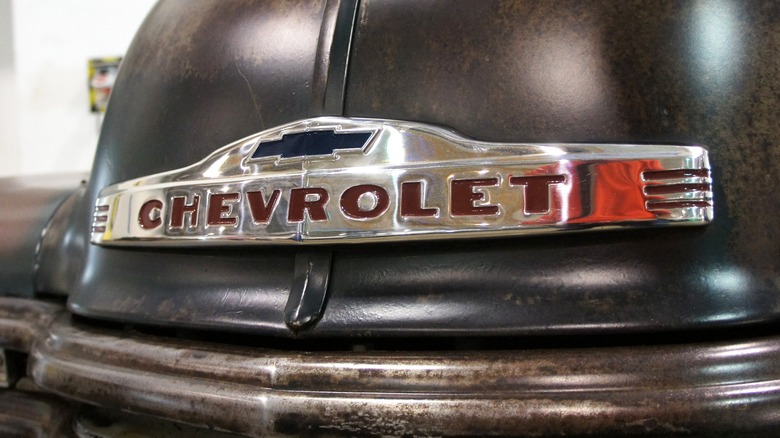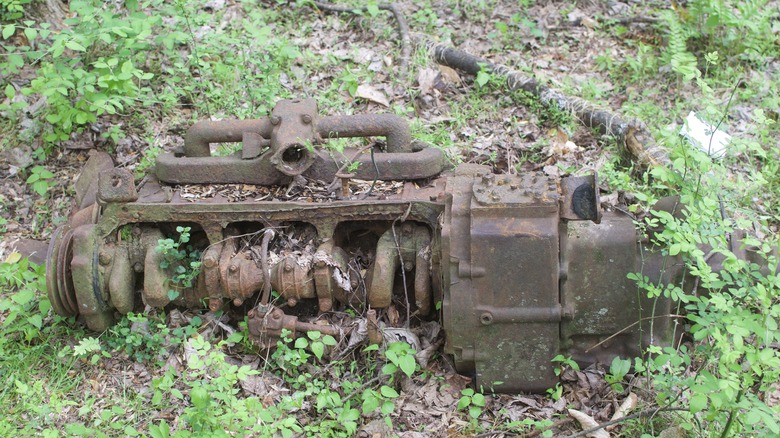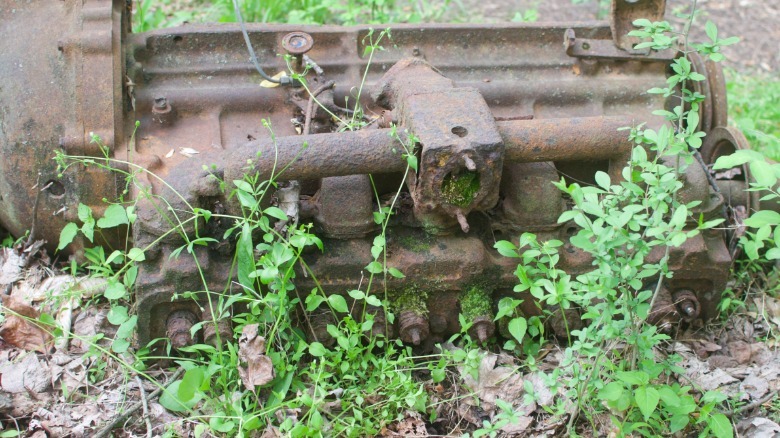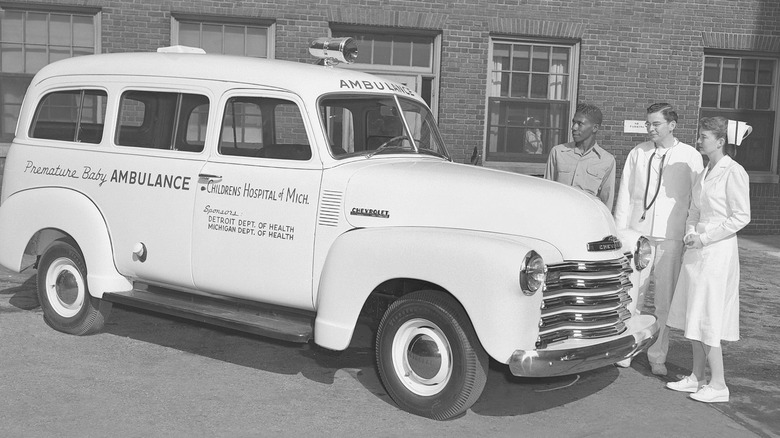Forget The Barn Find, We Unearthed This Classic Chevy Engine In The Woods
On Sunday afternoon, I received a text from a friend that said "I found a fossil." The picture attached showed a dilapidated block of cast iron laying unceremoniously in the woods. Two hours later, and after briefly getting lost in the woods of Baltimore County, Maryland, I was standing next to the veritable hunk of iron ready to see what was unearthed. But it wasn't just a piece of scrap left in the forest to return to nature — it was none other than a once-well-loved Chevrolet powerplant, the "Stovebolt" 6, and a transmission too (or what was left of it). The engine was also referred to as "The Cast Iron Wonder" for reasons I would soon find out. This engine was heavy. After several fruitless attempts to see any more markings on the side of the engine, I gave up trying to move it and instead documented what I was looking at.
The engine was entirely seized and the valve cover and oil pan were missing, allowing an entire ecosystem to take up residence inside. There was no saving the engine, as it would take literal magic, or a large blank check, to get the engine to fire up. But the exhaust manifold and big, mostly faded "GM" stamping on the side were all I needed to see. The six-cylinder represents a vital part of Chevrolet's history, before the Corvette, before the Camaro, and even the before the consecrated Chevy Small Block.
The cast-iron wonder
As for what specific vehicle this engine lived its life in, that's a mystery that has been lost to nature. However, its unknown former automotive body doesn't diminish the historicity of the engine, even in its less than factory-fresh condition. The Stovebolt engine, named for the visual similarities between the bolts holding it together and the bolts on an old woodstove, was first produced in 1929, according to Chevy, and served as one of the brand's first truck engines that were capable of doing real work. It was marketed with the tagline "six for the price of four." Although the engine was redesigned multiple times over its tenure tucked into the engine bays of your nearest Chevy, the heating implement-inspired moniker stuck.
Not only did it serve as the beating heart of Chevy's trucks for several decades, but it was also the first powerplant for the new 1935 Chevy Suburban. In the engine bay of the now ubiquitous Suburban, the Stovebolt produced a thundering 60 horsepower. For comparison, a 2023 Suburban with a 6.2-liter V8 produces 420 horsepower.
Decades of faithful service
The Stovebolt would serve as Chevy's primary engine until 1955 when Chevy introduced the now significantly more famous Chevy Small Block, and it would continue production into the 1960s. Over 30 years of service is practically a millennium as far as engines are concerned. In the engine's twilight years, the power would raise to north of 135 horsepower. Modified versions would see life as the first-ever powerplant to the Chevy Corvette. In that application, it was given the slightly spicier "Blue Flame Six" moniker.
The engine I found in the woods was likely not the fiery heart of a Corvette, or the inline-6 powering the trucks that kept America alive during hard economic times. It was probably the engine of a tired work truck or family sedan that was deemed too much of a paperweight to hang around before getting left in the woods for a family of raccoons to repossess. But, just as you can glean a lot of ancient history from an Egyptian obelisk in Luxor or walking the several millennia-old streets of Jerusalem, you can learn a lot about one of the nation's most storied automakers from a lump of cast iron lying in the woods.



